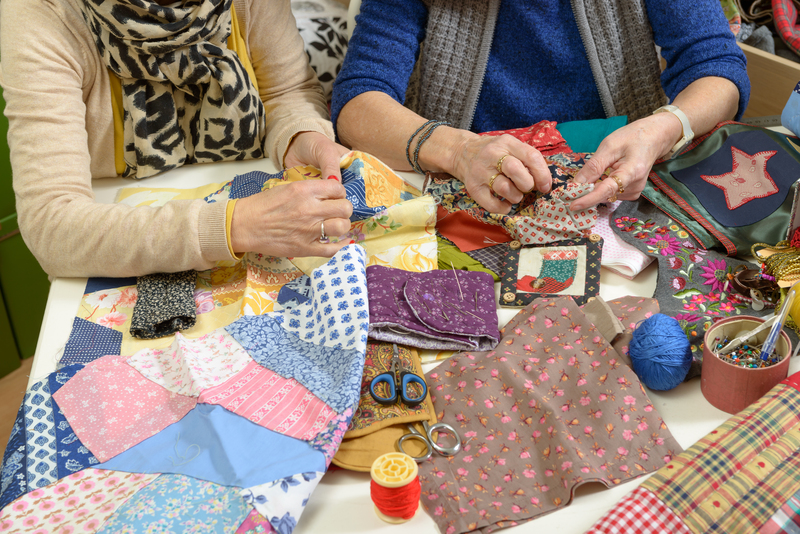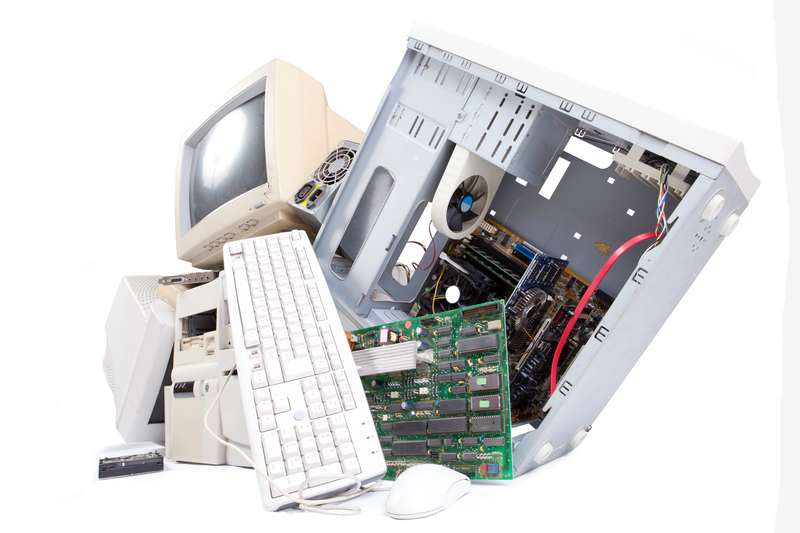Sustainable Solutions for Disposing Pots and Pans
When your cookware reaches the end of its life, finding eco-friendly ways to dispose of pots and pans is crucial. Many people simply throw away their old pots and pans, unaware that these items often end up in landfills, taking centuries to break down and contributing to environmental pollution. Are there better, sustainable solutions for disposing of pots and pans? Absolutely! In this comprehensive guide, we'll explore various sustainable solutions for disposing pots and pans to help you responsibly get rid of your unwanted cookware while protecting the planet.
Understanding the Environmental Impact of Cookware Disposal
Each year, millions of cookware pieces are discarded, many of which are made of materials like aluminum, stainless steel, non-stick coatings, and cast iron. These materials do not decompose easily and can leach harmful substances into the environment. Improper disposal has lasting consequences:
- Landfill Overpopulation: Old pots and pans take up valuable space in already overflowing landfills.
- Toxic Leaching: Non-stick pans can leach chemicals like PTFE and PFOA into soil and groundwater.
- Resource Waste: Metals and materials that could be recycled are often wasted, increasing demand for new raw materials.
Understanding these impacts is the first step toward making more environmentally friendly choices when disposing of old cookware.

Assessing If Your Pots and Pans Can Be Reused or Repaired
Before considering disposal, think about alternative options. Not all damaged pots and pans need to be thrown away. Many can be given a new life either in your own kitchen or in someone else's.
Repair and Refurbish
- Re-season cast iron cookware: A rusty skillet often just needs a deep clean and re-seasoning.
- Replace handles or lids: Lost or broken parts can often be found online or at hardware stores.
- Polish stainless steel (remove stains) with eco-friendly products to restore their shine.
- Re-coat non-stick pans through professional services if available in your area.
Repurpose Creatively
- Planters: An old pan makes a quirky and functional flowerpot.
- Organizers: Deep pots can hold tools, utensils, or garden supplies.
- Art projects: Artists turn old cookware into sculpture, wall decor, or birdbaths.
- Storage: Use retired cookware for storage solutions in your garage, shed, or craft room.
Eco-Friendly Ways to Dispose of Old Pots and Pans
If your cookware is truly beyond salvation, it's time to consider other sustainable disposal methods for pots and pans. Sustainable options reduce waste and maximize resource recovery.
1. Donate Usable Cookware
If your pans still function, consider donating them to:
- Charity shops and thrift stores
- Homeless shelters or community kitchens
- Freecycle and 'Buy Nothing' groups
- Local churches or social service organizations
Donating is an excellent sustainable alternative for disposing of pots and pans because it extends their lifespan and assists others in need.
2. Recycle Cookware Responsibly
Most pots and pans are made from metals such as aluminum, copper, steel, or cast iron--all of which are highly recyclable. However, proper recycling requires following a few important steps:
- Contact local recycling centers: Not all centers accept cookware, so check first.
- Remove non-metal parts: Handles, lids, and knobs made of plastic, wood, or glass should be separated.
- Bundle similar materials together: Some centers prefer sorted metals.
- For non-stick pans, ask about Teflon or PTFE disposal and if they have special requirements.
Many scrap metal yards accept all-metal pans--even rusty or dented ones--because the metal can be melted down and reused in manufacturing. Recycling is one of the greenest solutions for disposing of old pots and pans.
3. Engage in Manufacturer Take-Back Programs
Some cookware brands have begun to offer take-back or recycling programs. This is a convenient sustainable solution, as manufacturers are equipped to process and recycle old products responsibly. Look for these programs from brands like:
- Calphalon's ReNew Program (for their own-brand cookware)
- TerraCycle's cookware recycling boxes
- Onyx or Misen (check each company's website for current offerings)
These take-back programs ensure materials are handled properly and often keep non-renewable resources in circulation.
4. Compost Wooden Handles (if Applicable)
If your old cookware features wooden handles, remove and compost them. Make sure the wood is untreated and paint-free, as chemical treatments can harm compost micro-organisms.
What About Non-Stick and Ceramic Coated Pans?
Non-stick and ceramic coated pans require extra attention because their coatings can be problematic for recycling facilities and the environment.
- PTFE and PFOA concerns: Many older non-stick pans contain harmful chemicals. Recycle these only at designated facilities.
- Some recycling centers want the non-stick coating removed before accepting the pan.
- Always check with the recycling center for guidelines, or utilize manufacturer take-back programs.
Disassembly Tips for Complex Cookware
Many pans combine materials--stainless bodies with rubber grips, glass lids, or non-stick interiors. To enhance recycling efficiency:
- Disassemble as much as possible--unscrew handles, remove gaskets, and separate materials.
- Identify each material before sorting for donation, recycling, or disposal.
- Check for hazardous coatings that might restrict recycling options.
Alternatives to Traditional Disposal: Creative Upcycling Ideas
If you're passionate about sustainability and love DIY projects, upcycling old pots and pans offers endless possibilities:
Garden and Outdoor Uses
- Create raised beds or planters for herbs, flowers, or succulents.
- Use as decorative bird baths or feeders.
- Design quirky garden path stones using embedded cookware bottoms.
Home and Crafts
- Build wall clocks or mirrors with old pan bases.
- Make a kitchen-themed photo frame or message board.
- Turn pans into candle molds or soap trays.
These projects not only reduce waste but can add a unique charm to your home or garden.
Tips for Buying Sustainable Cookware for the Future
One of the best ways to ensure sustainable disposal in the future is to make more eco-friendly choices when buying cookware:
- Select pans made from recycled or easily recyclable materials such as stainless steel or cast iron.
- Avoid pans with chemical coatings that pose challenges for recycling.
- Prioritize products from manufacturers with established take-back or recycling programs.
- Opt for cookware that is easily repairable or has replaceable parts.

Frequently Asked Questions about Sustainable Disposal of Pots and Pans
Can I put pots and pans in my curbside recycling bin?
Typically, no. Most municipal curbside programs do not accept pots and pans because their size, shape, and material can jam recycling machinery. Instead, take them to a specialized metal recycling center or scrap yard. Always check local regulations first.
What should I do with glass lids?
Glass lids made from tempered glass cannot usually be placed in regular glass recycling due to their different composition. Many centers suggest tossing them in the trash, but check for local glass recycling events or see if art studios can use them.
My non-stick pan is badly scratched. Is it dangerous?
Yes, a significantly scratched non-stick pan (especially those produced before 2015) could expose you to harmful chemicals. It's safest to replace it and dispose of it responsibly through specialty recycling or take-back programs.
Are there eco-friendly cookware brands to consider?
Yes! Look for brands that use recycled materials, design products for longevity, participate in recycling or take-back programs, and avoid toxic coatings. Leading examples include GreenPan, Lodge, Onyx, and Scanpan.
Conclusion: Making Sustainable Choices Today for a Greener Tomorrow
Disposing of pots and pans doesn't have to harm the environment. By actively seeking out sustainable solutions to disposing pots and pans, you're minimizing landfill waste, protecting natural resources, and reducing pollution. Remember to:
- Reuse, repair, or upcycle whenever possible
- Recycle metals at local facilities or through take-back programs
- Donate usable cookware to those in need
- Choose eco-friendly alternatives going forward
With a bit of research and creativity, everyone can make a positive environmental impact--one pot or pan at a time. Switching to sustainable disposal practices isn't just a trend; it's an essential part of building a cleaner, healthier future.
Share these sustainable cookware disposal solutions in your community and do your part for the planet!
